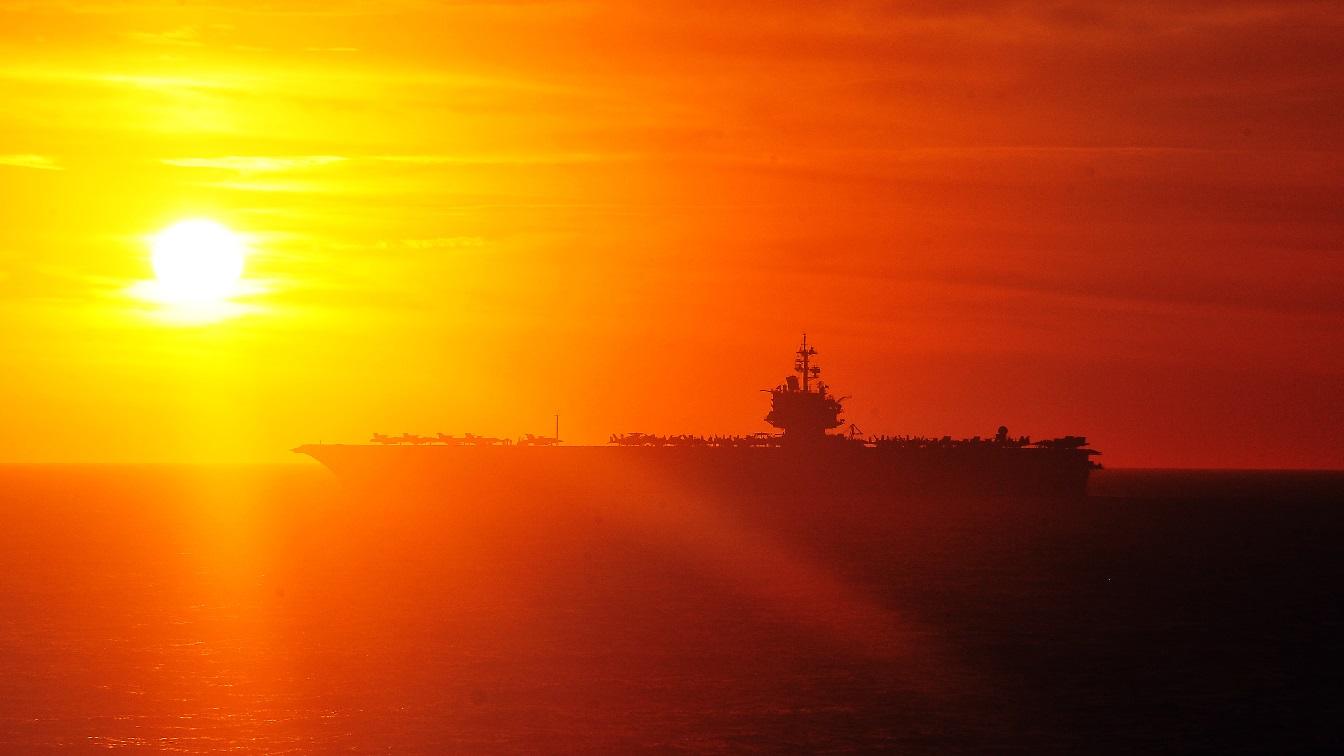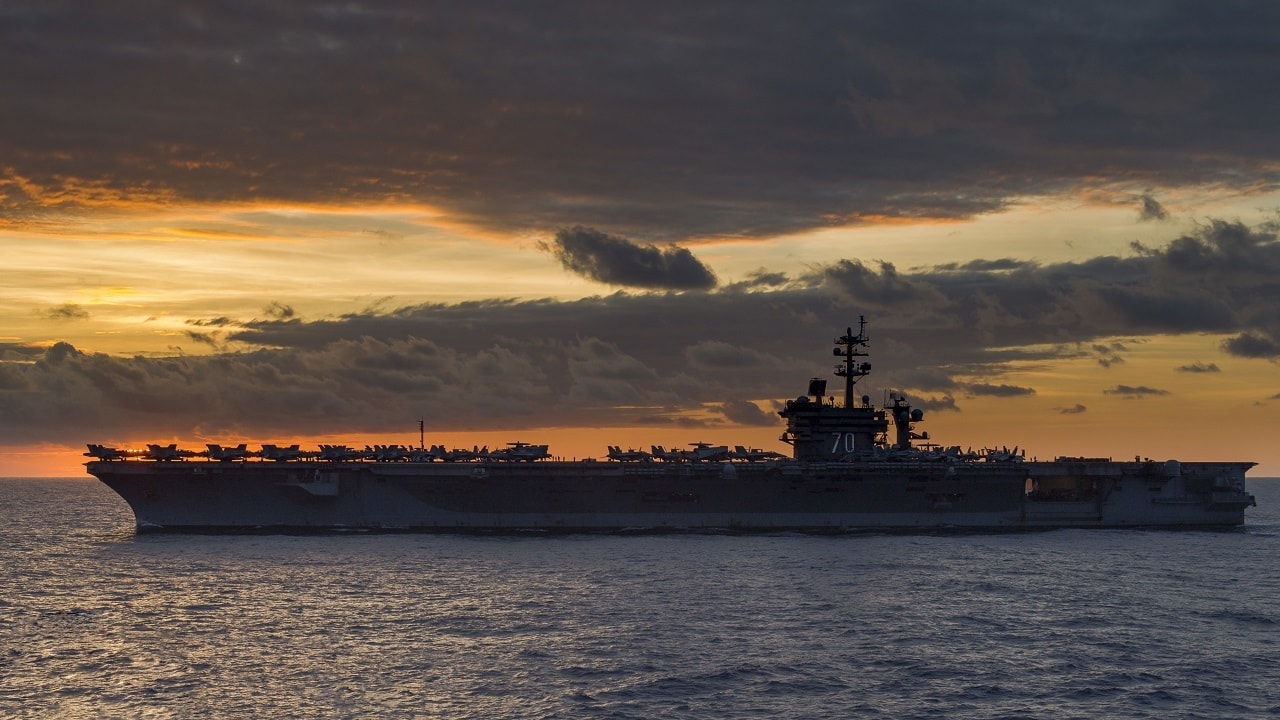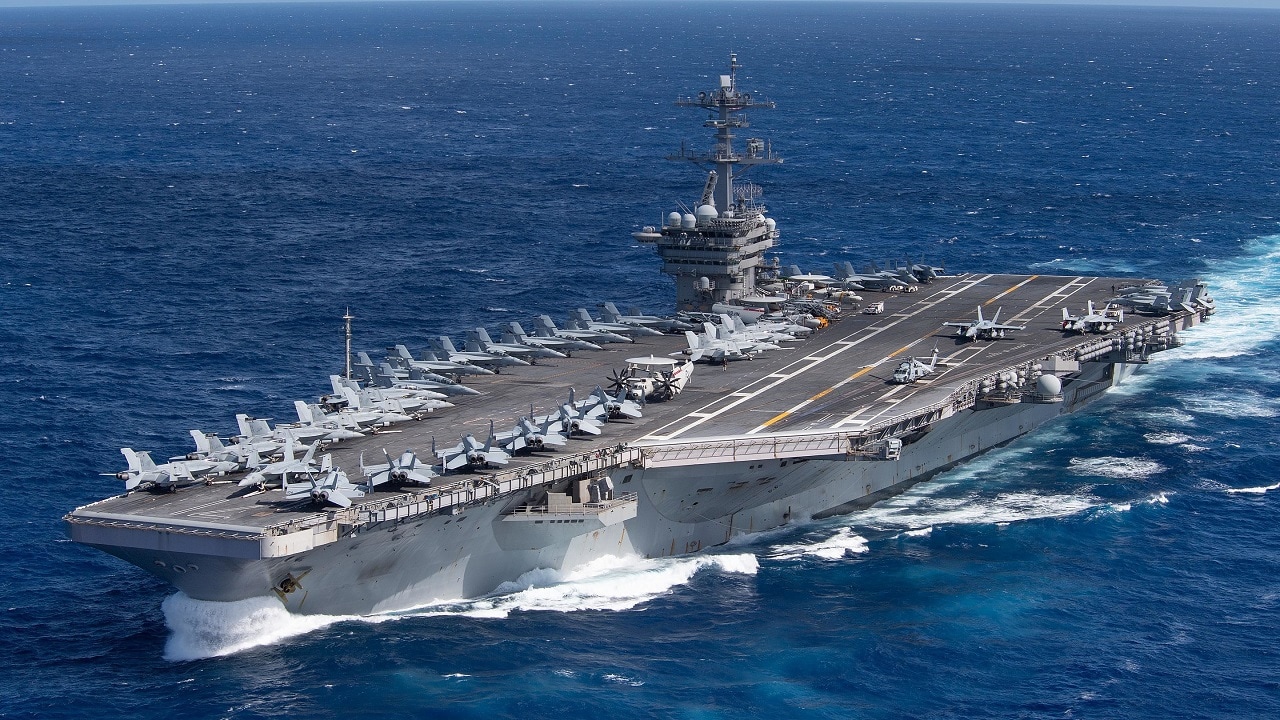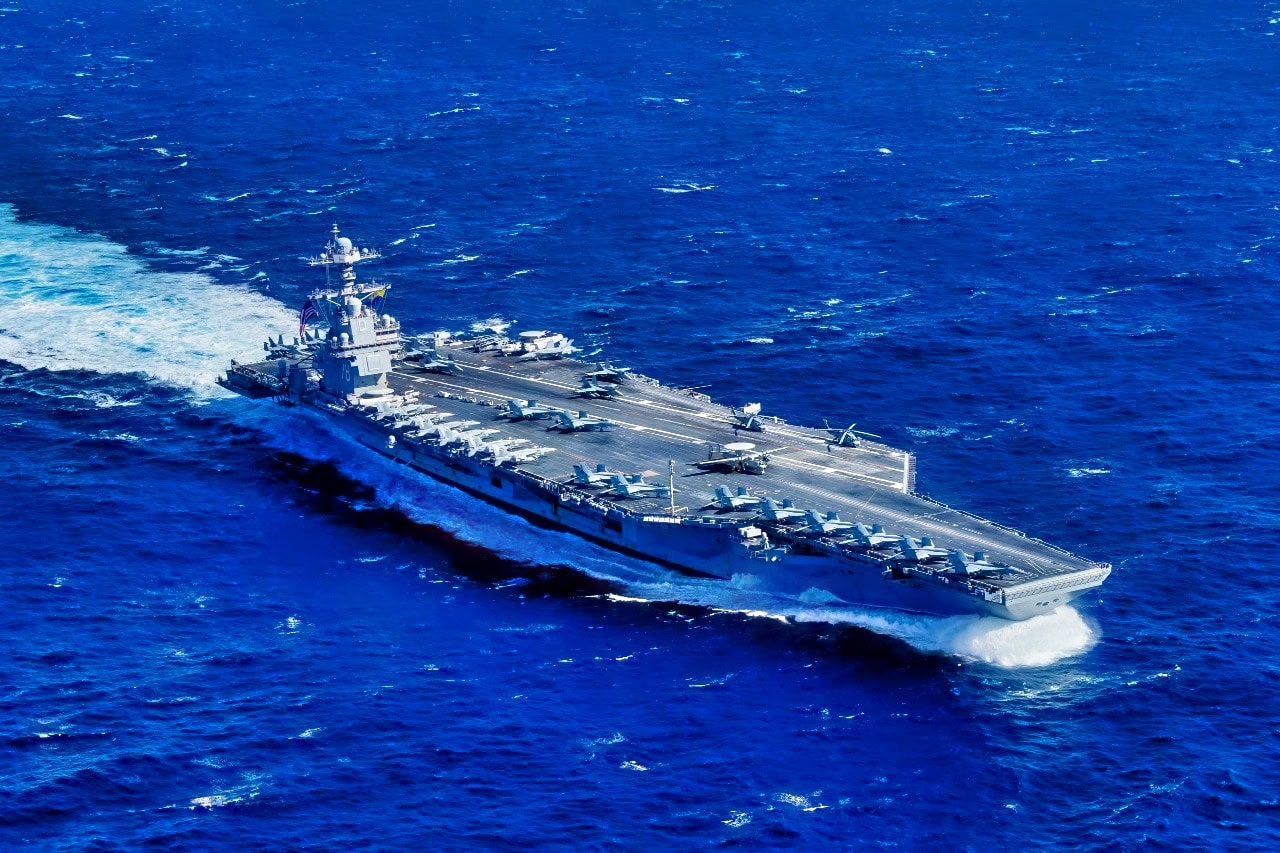Key Points and Summary: The U.S. Navy faces a critical crossroads as modern threats like China’s anti-ship missiles and stealth submarines challenge the dominance of aircraft carriers.
-With over $13 billion invested in carriers like the USS Gerald R. Ford, their vulnerability in a Taiwan conflict raises questions about their future role.
-Submarines armed with cruise missiles may offer a safer, more effective approach, but a carrier loss could shake American resolve and escalate tensions.
-As naval warfare evolves, the U.S. must adapt its strategy to counter advanced threats while ensuring its dominance in the Indo-Pacific region remains intact.
Are the Days of Aircraft Carrier Warfare Over?
The U.S. Navy is making what might be a fateful choice as America ushers in a new national security team under President Donald Trump.
The Navy is heavily dependent on aircraft carriers as the main means to project power and take the fight to the enemy. The new USS Gerald R. Ford supercarrier cost over $13 billion.
The next carrier in the Ford-class – the USS John F. Kennedy has a price tag of $11 billion.
These are huge investments into a type of combat asset that has been a fixture of naval strategy since World War II.
New Era of Naval Combat
But what if that strategy needs to change?
Carriers have limitations. There are “carrier killing” anti-ship missiles the Chinese have in abundance. New stealthy diesel-electric submarines could sneak into a carrier strike group and cause all types of mischief with the ability to even sink a carrier.
China is cutting off access to the Navy to blunt U.S. strategy in the Indo-Pacific, and this means that the maritime branch may have to remain outside the range of anti-ship missiles and submarines.
The Unthinkable: A Sunk U.S. Aircraft Carrier
If the worst happened and war with China sparked from perhaps an invasion or blockade of Taiwan, carriers could be in trouble.
I wrote in my last book that the United States must come to terms with the possibility that it could lose an aircraft carrier.
This would necessitate a broader war, but it would also be a shocking disaster for the American public, which has shown it is not in favor of any type of warfare.
Five to six thousand sailors could perish, and it would send a message to the world that the United States is vulnerable.
Aircraft Carriers: Do They Belong in the Past?
The Navy has been so used to sailing floating air bases safely that it has few contingency plans for a sunk aircraft carrier.

ATLANTIC OCEAN (Jan. 23, 2012) The aircraft carrier USS Enterprise (CVN 65) is underway in the Atlantic Ocean while conducting a composite training unit exercise. (U.S. Navy photo by Mass Communication Specialist 3rd Class Jesse L. Gonzalez/Released)
Battle planners in the maritime branch are aware of the risks but there doesn’t seem to be a fear that the Americans could lose a flat-top.
It would boil down to President Trump to see how much resolve and confidence the United States would have against China.
Trump May Not Want to Defend Taiwan
Would the president even fight back if China invaded or blockaded Taiwan? It seems that Trump is more in tune with approaching relations with China on economic and political terms with more diplomacy than military might. This could mean that the military option against China is not the biggest worry that Trump has.
His defense team has stalwart China hawks such as Secretary of State Marco Rubio and National Security Advisor Mike Waltz. Secretary of Defense nominee Pete Hegseth wants a more lethal military.
They would be sure to avow revenge if China sunk a carrier, but that doesn’t mean Trump would decide to strike back in such a hostile reaction.
Depend On Submarines
One operational gambit the Americans could try is to fight with submarines instead of surface ships. The use of undersea warfare options with Tomahawk cruise missiles against China’s shore based anti-ship missiles and coastal air defenses would be one way to fight back.
Nuclear-powered submarines are difficult to guard against and American subs and surface vessels could sink China’s carriers too with their own anti-ship missiles.
The United States thus has a quandary. Keep aircraft carriers near China and choose to fight in a way that Americans have pursued since World War Two or come up with a different plan. Losing the USS Gerald R. Ford or any carrier would be a tragedy of epic proportions.

(Feb. 10, 2018) The Nimitz-class aircraft carrier USS Carl Vinson (CVN 70) transits the South Chna Sea. The Carl Vinson Strike Group is currently operating in the Western Pacific as part of a regularly schedule deployment. (U.S. Navy photo by Mass Communication Specialist Third Class Jasen Morenogarcia/Released)
However, it boils down to the individual sailor. The Navy knows the stakes and each person serving in a carrier strike group must do their jobs better than the Chinese.
All American officers and enlisted must be trained in a realistic fashion. Even the lowest recruit should be taught they could die on a sunk ship. This is a possibility that no one had to worry about during the Global War on Terror. Now, warfare is different. There are great powers to think about and they come loaded with modern naval weapons.
Losing a ship was seen as highly likely during the Cold War with the Soviet navy as strong as ever. That era has returned with the Chinese.
I don’t see the United States changing its naval strategy that depends so much on carriers anytime soon. The Americans may have to learn the hard way and find themselves confronted with a sunk carrier.
Then would the United States want to up the fight into attacking Chinese cities? Trump has talked on social media before to bring death and fire to the North Koreans should they ever use nuclear weapons.
The Chinese have an estimated 600 nuclear warheads with the ability to reach U.S. population centers with ICBMs. Could the sinking of a carrier create a nuclear crisis? One side would have to back down, but conventionally the Americans would want some type of vengeance first.
The Aircraft Carrier Bottomline
Aircraft carrier strategy, operational art, and tactics will be different in 2025. The United States is still the keeper of the sea, but not like it was 20 years ago. The Navy may not have unfettered access to the First Island Chain, and the maritime branch could someday have a sunk carrier.

(Jan. 25, 2020) The aircraft carrier USS Theodore Roosevelt (CVN 71) transits the Pacific Ocean Jan. 25, 2020. The Theodore Roosevelt Carrier Strike Group is on a scheduled deployment to the Indo-Pacific. (U.S. Navy photo by Mass Communication Specialist Seaman Kaylianna Genier)
That means it will take a huge force of submarines to strike back with the carriers safely out of range of anti-ship missiles.
That could mean all the money that the United States is spending on the Ford-class may come to nothing if the Navy cannot patrol the waters in the First Island Chain.
There is a real possibility of a sunk aircraft carrier should the Americans fight over Taiwan.
About the Author: Dr. Brent M. Eastwood
Brent M. Eastwood, PhD is the author of Don’t Turn Your Back On the World: a Conservative Foreign Policy and Humans, Machines, and Data: Future Trends in Warfare plus two other books. Brent was the founder and CEO of a tech firm that predicted world events using artificial intelligence. He served as a legislative fellow for U.S. Senator Tim Scott and advised the senator on defense and foreign policy issues. He has taught at American University, George Washington University, and George Mason University. Brent is a former U.S. Army Infantry officer. He can be followed on X @BMEastwood.

